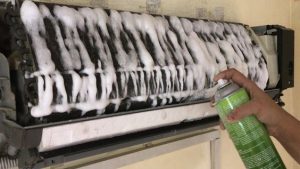Diagnosing and Repairing a Corrupt SQL Server Database

SQL Server databases are powerful tools for organizing and managing data. Unfortunately, these databases can become corrupted due to hardware failure, malware, or a variety of other reasons. To ensure that your data is safe and secure, it’s important to know the ways you can diagnose and repair a corrupt SQL Server database.
Table of Contents
Diagnosing a Corrupt Database:
The first step when trying to diagnose and repair a corrupt SQL Server database is to identify the type of corruption that has occurred. There are several types of corruption including physical damage, logical damage, metadata corruption and internal errors. Each type of corruption requires special attention in order to be corrected properly.
Once the type of corruption has been identified, you should run a DBCC CHECKDB command which will scan the database for any errors and report them to you. This command should be run against all of the databases in your system to ensure that any corruption is detected.
Repairing a Corrupt Database:
Once the type of corruption has been identified and reported, it’s time to start repairing the database. Depending on the type of corruption present, there are several different methods available for repair.
For physical damage, restoring from a backup can often times solve the issue. Logical damage can sometimes be repaired by running an ALTER TABLE command or rebuilding indexes, while metadata problems can usually be solved with scripts provided by Microsoft or third-party tools such as Red Gate’s SQL Compare tool.
In cases where the corruption is too severe or cannot be repaired, it may be necessary to recreate the database from scratch. This process involves creating a new database and then importing all of the data from the old one. This method should only be used as a last resort.
By following these steps and using appropriate tools to diagnose and repair corrupt databases, you can protect your valuable data and ensure that your system runs smoothly. Even if no problems are detected, it is still important to regularly back up your databases in case any issues arise in the future. Doing so will help prevent data loss and keep your business functioning at its best.
A corrupt SQL Server database can be a major headache for any business or organization. It can lead to data loss, unexpected downtime, and other potentially costly issues. Fortunately, there are steps you can take to identify the cause of corruption and repair the affected database.
In this guide, we will cover how to diagnose and repair a corrupt SQL Server database.
Diagnosing the Problem:
The first step when dealing with a corrupt SQL Server database is to pinpoint the exact cause of the problem. To do this, it is important to look at both hardware and software problems that could be contributing to the issue. Common causes of corruption include disk failure, virus attacks, power outages, application bugs, and incorrect backup procedures.
Once the potential cause of corruption has been identified, you can then start to investigate further. This involves reviewing the SQL Server Error Logs and looking at system tables such as sys.databases and sys.master_files. These system tables provide information on the physical structure of your database, which can be useful for diagnosing corruption issues. Additionally, running DBCC commands (Database Console Commands) can help identify any specific problems related to the data integrity of your database.
Repairing the Problem:
Once the exact cause of corruption has been identified, it is time to begin repairing the affected database. Depending on what caused the corruption in the first place, there are several different repair options available:
- Restore from Backup: If a recent backup of the database is available, you can restore it and replace the corrupted version.
- Run Database Consistency Checks (DBCC CHECKDB): This command will help identify any inconsistencies in your database and fix them.
- Run Page Level Restore (PLR): PLR allows you to recover individual pages from a corrupt database and restore them to their original state.
- Repair by Rebuilding Indexes: Indexes can also become corrupt due to disk failure or other issues. Rebuilds are often needed if this happens.
Conclusion:
If a SQL Server database becomes corrupt, diagnosing and repairing it is essential for maintaining data integrity and avoiding further problems down the line.





